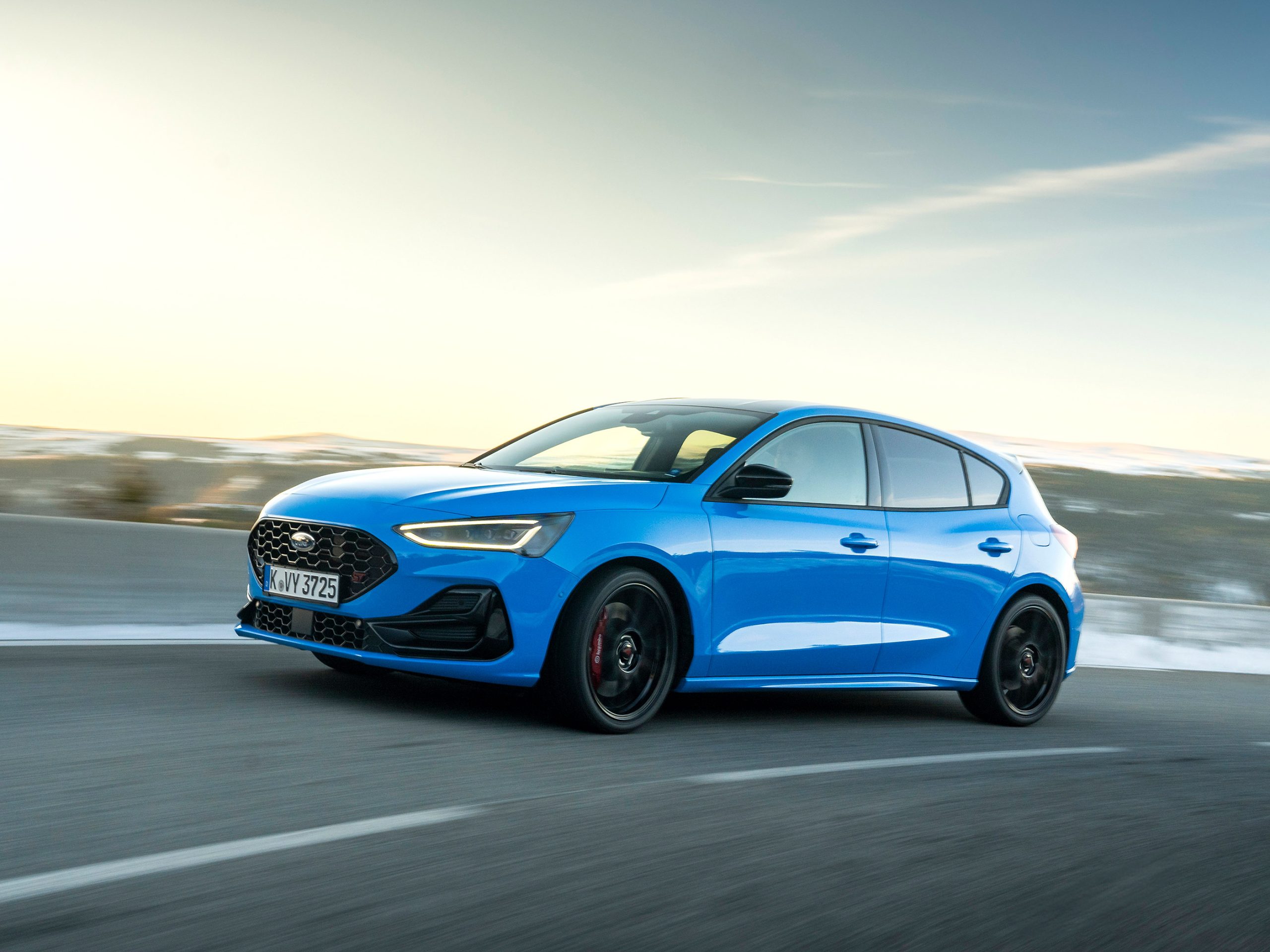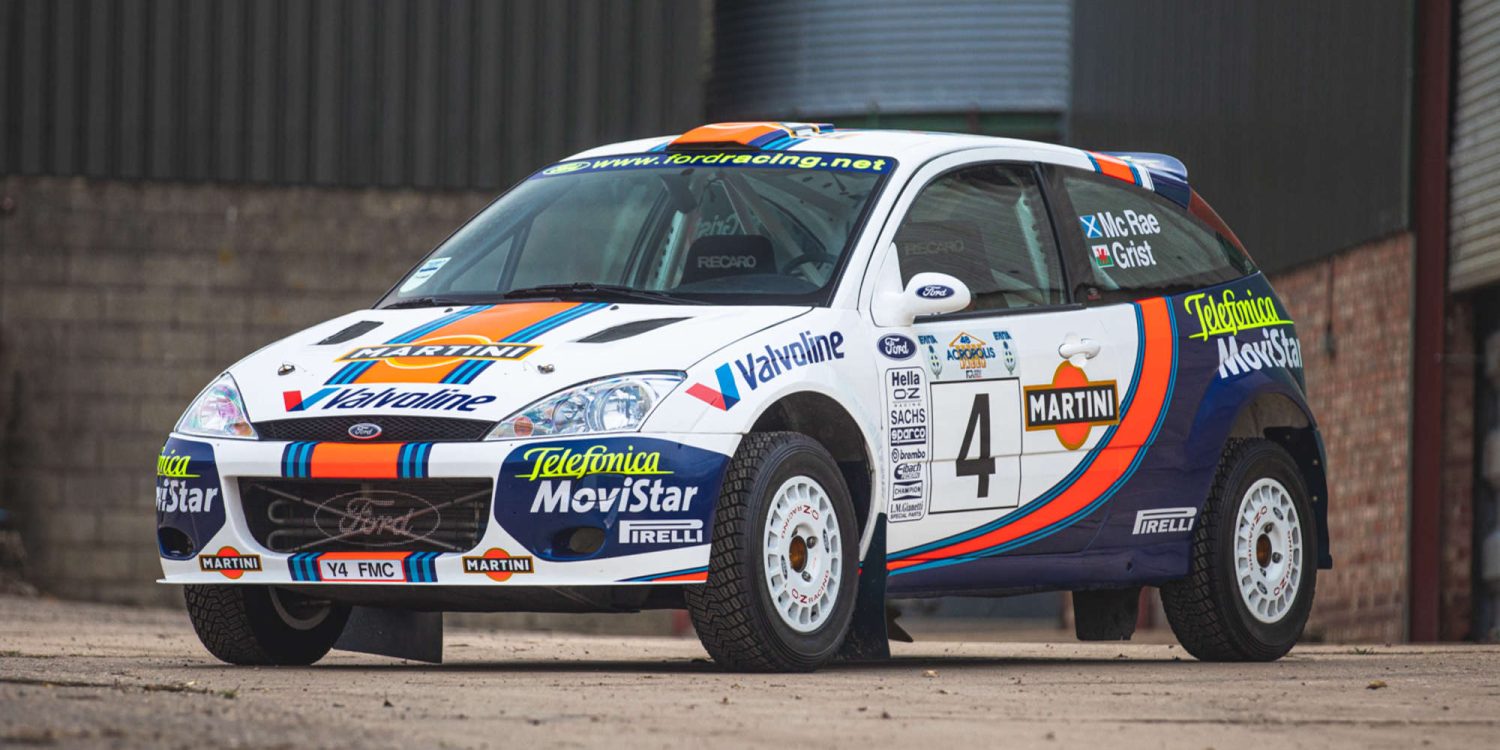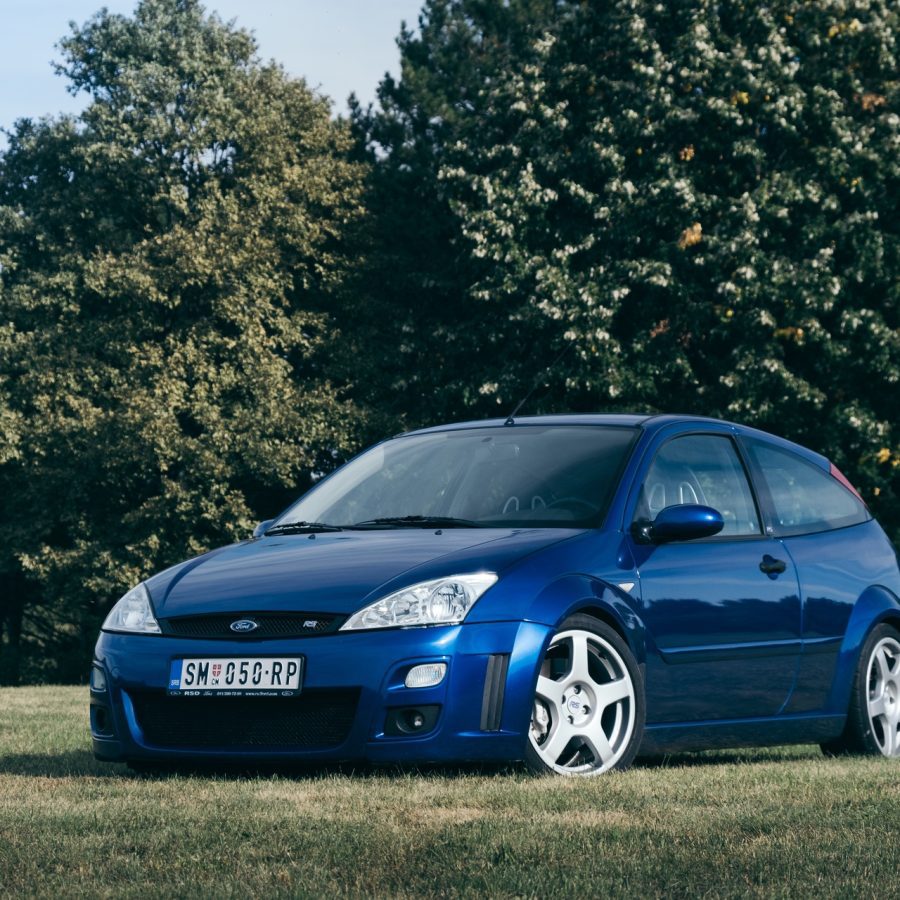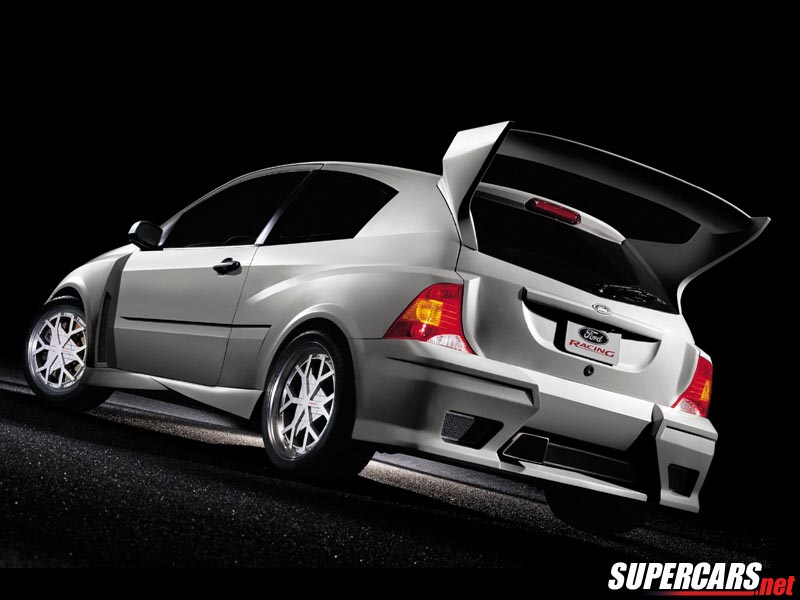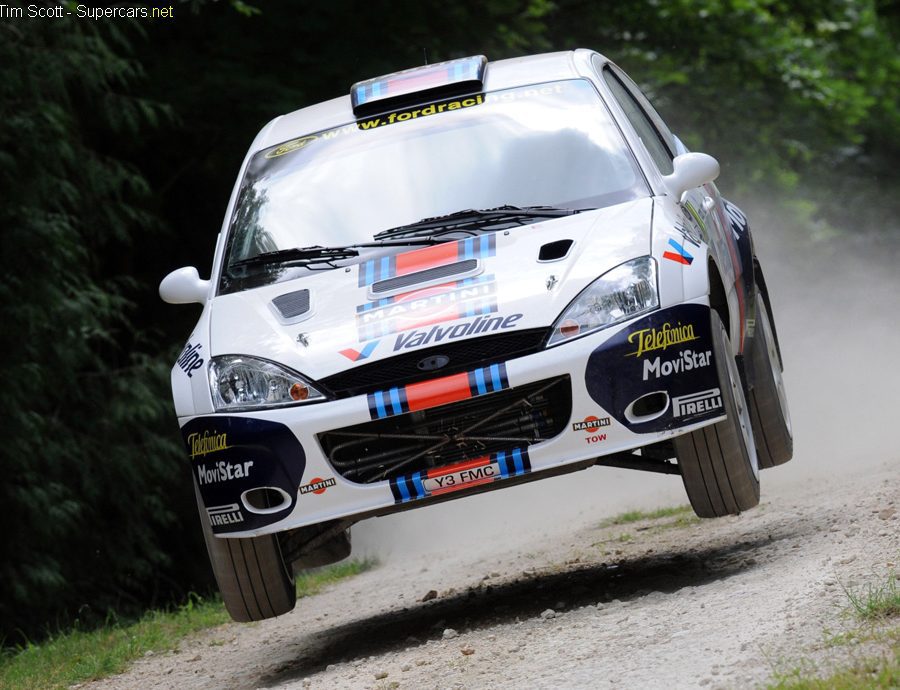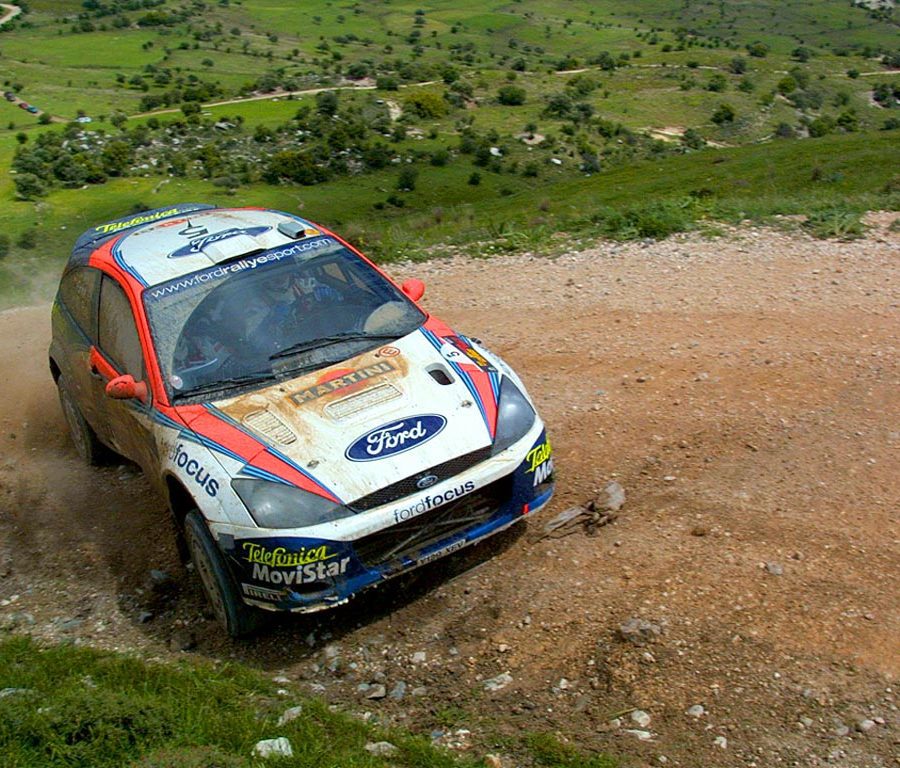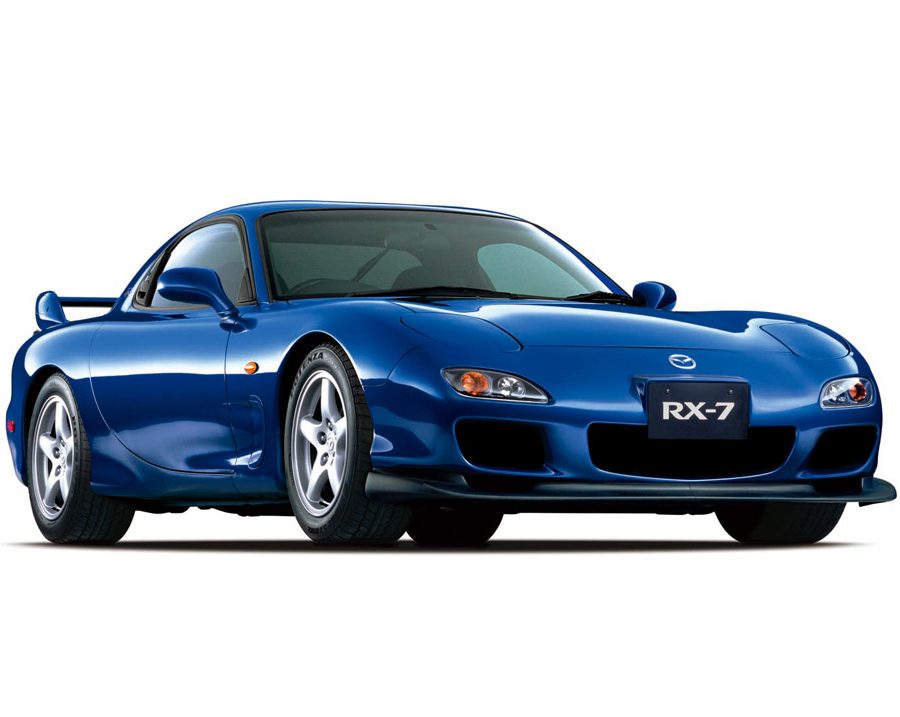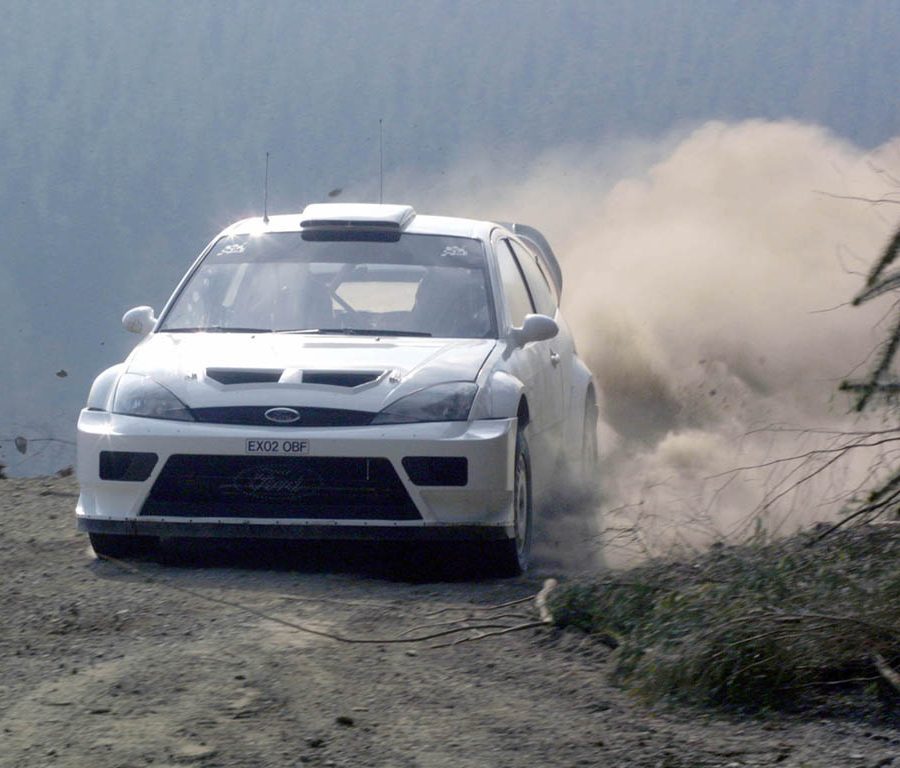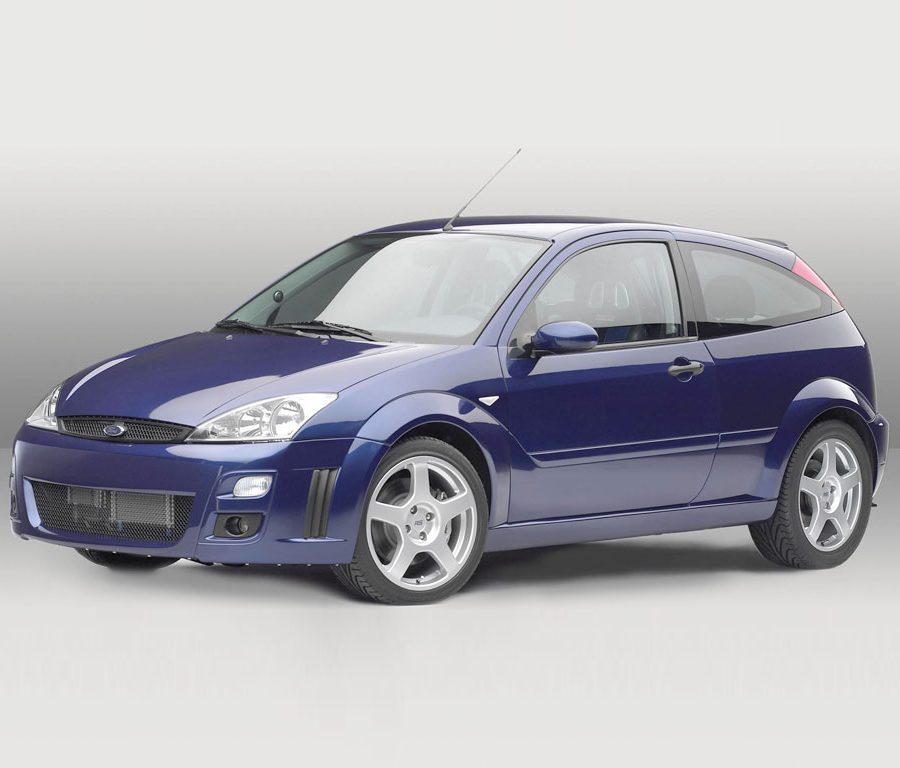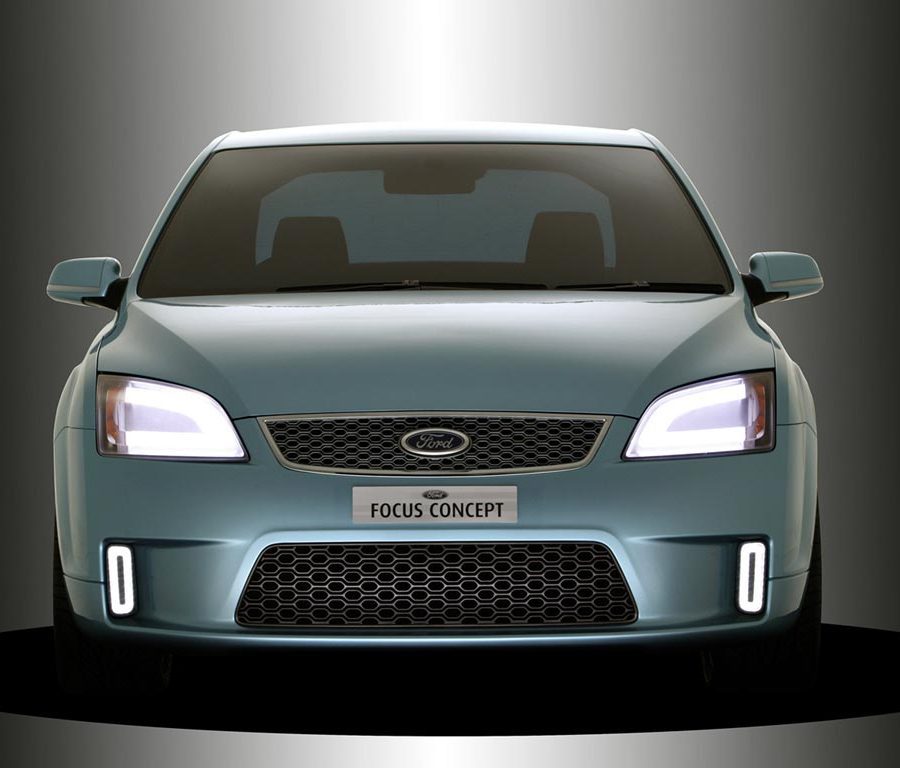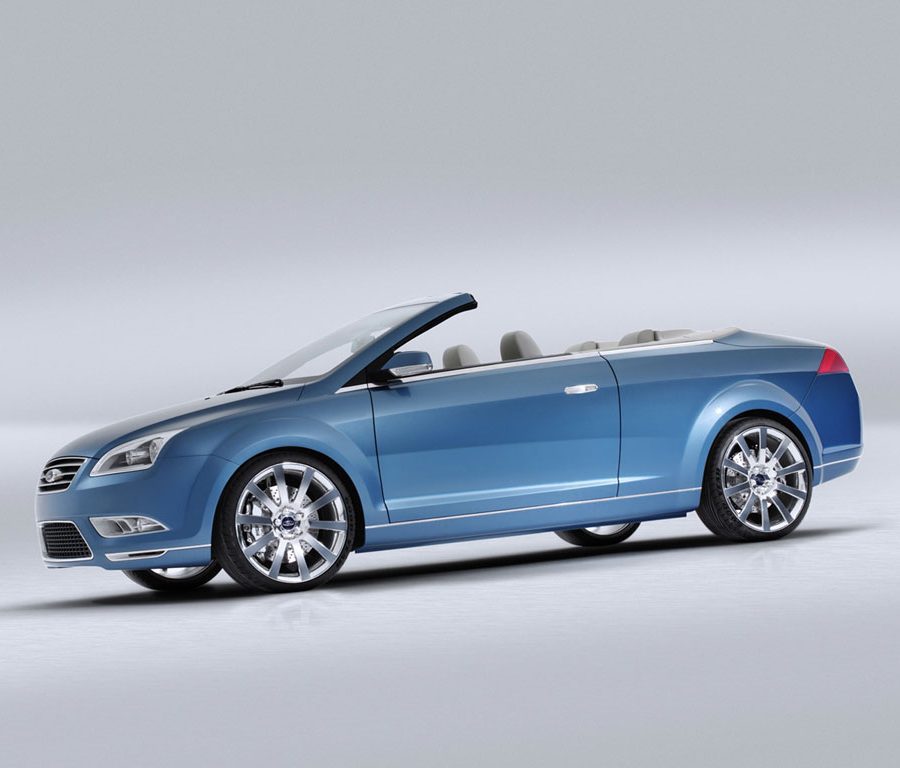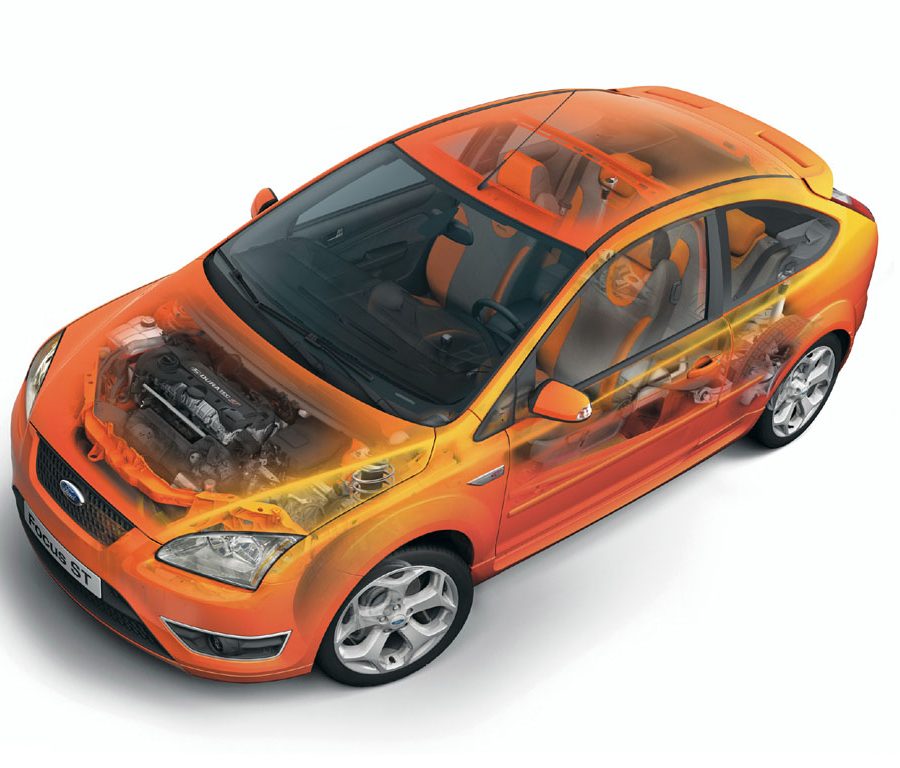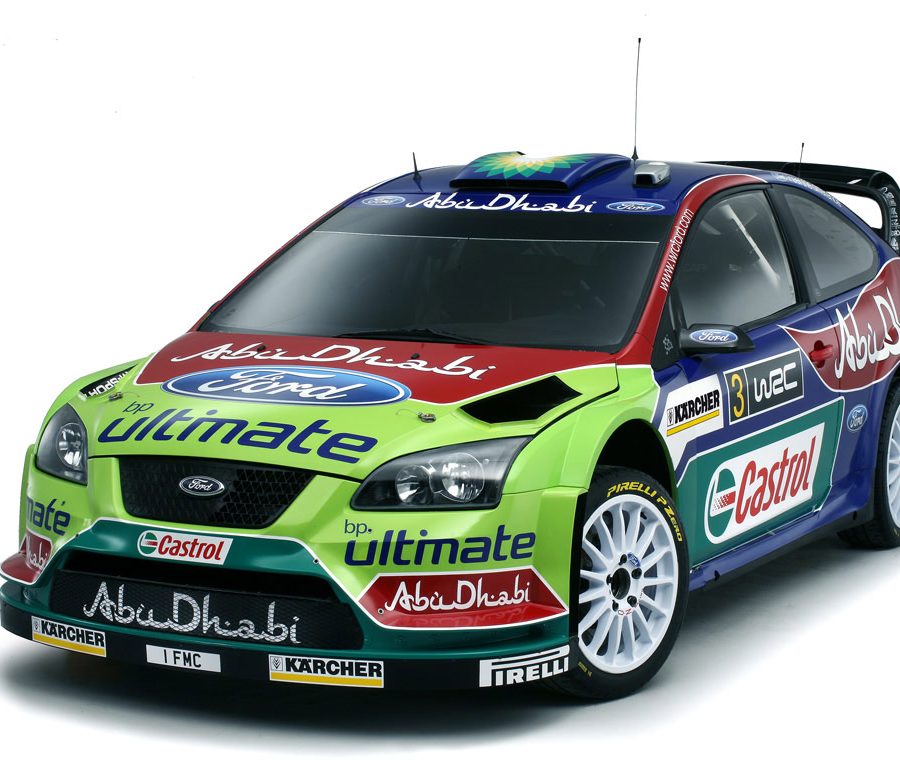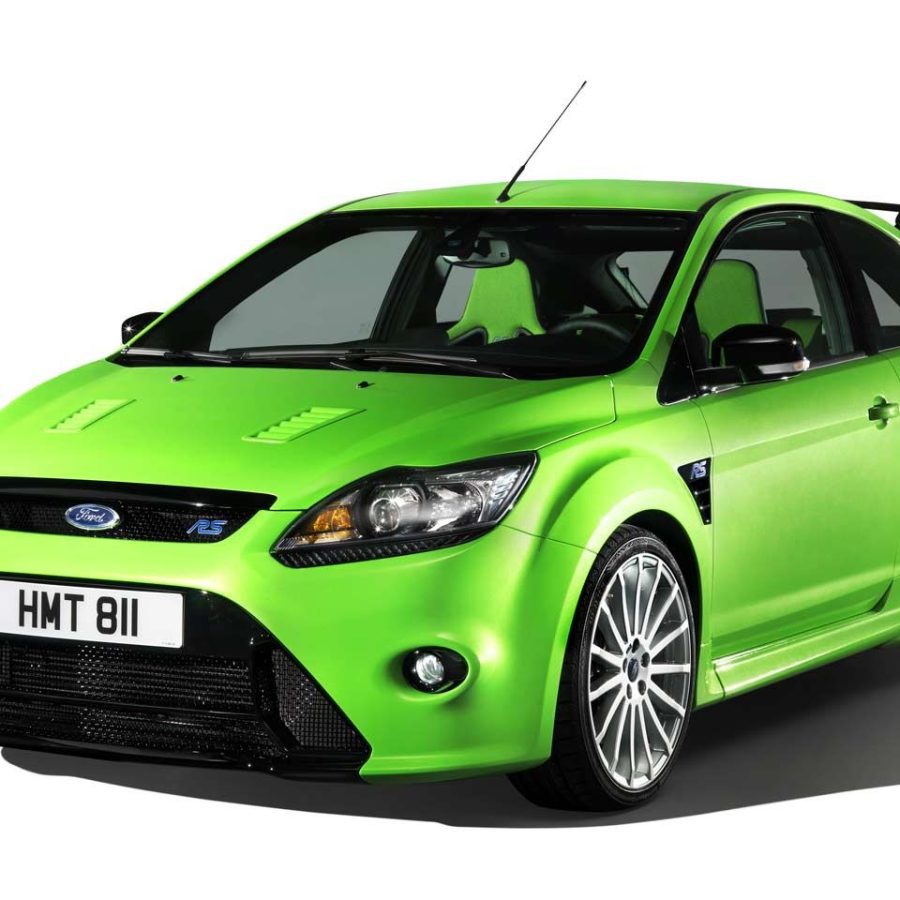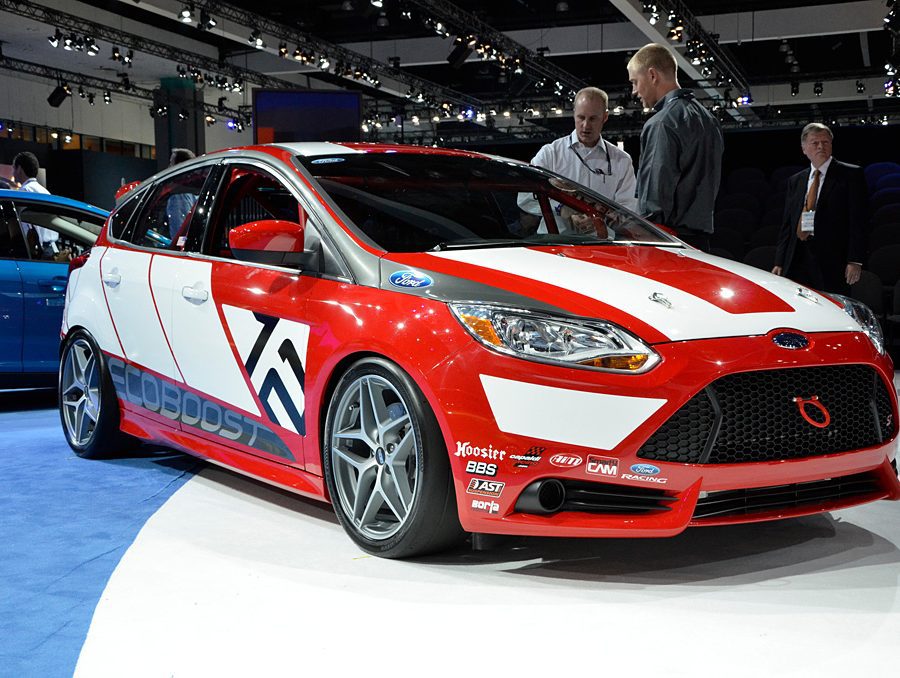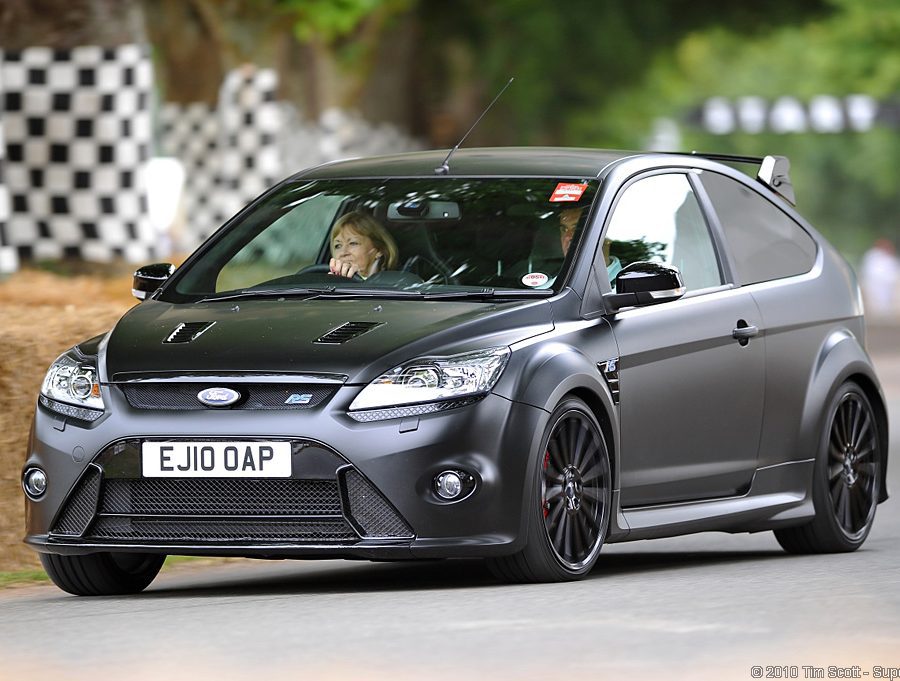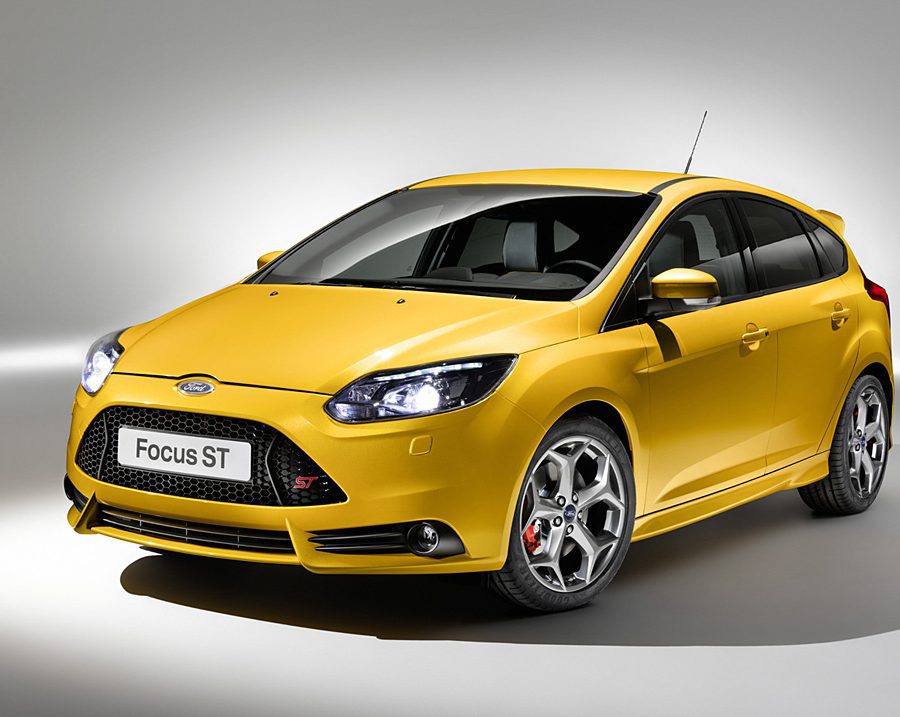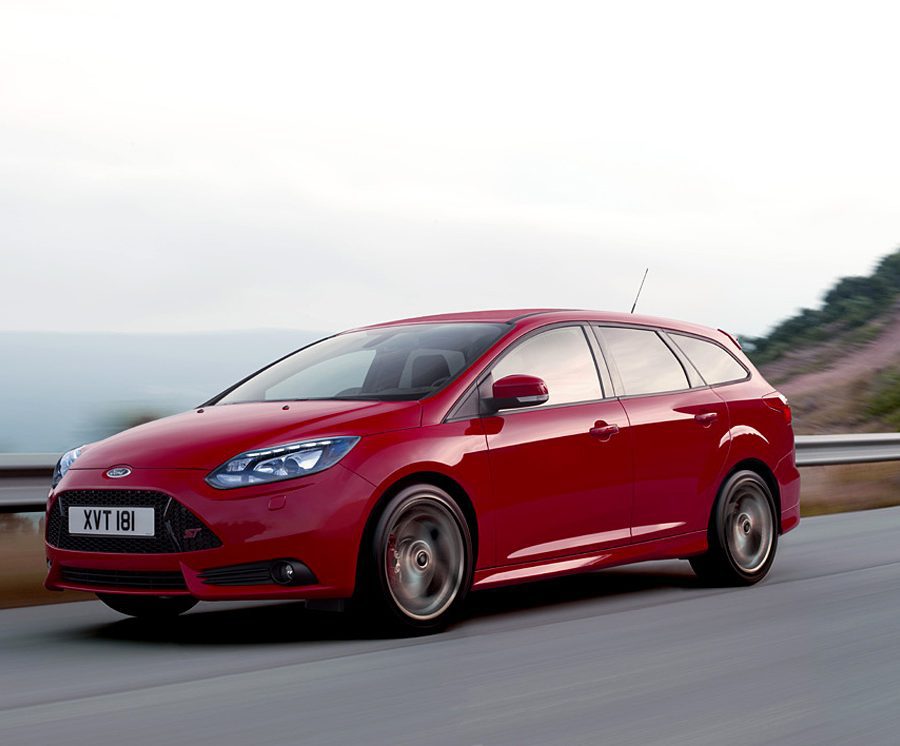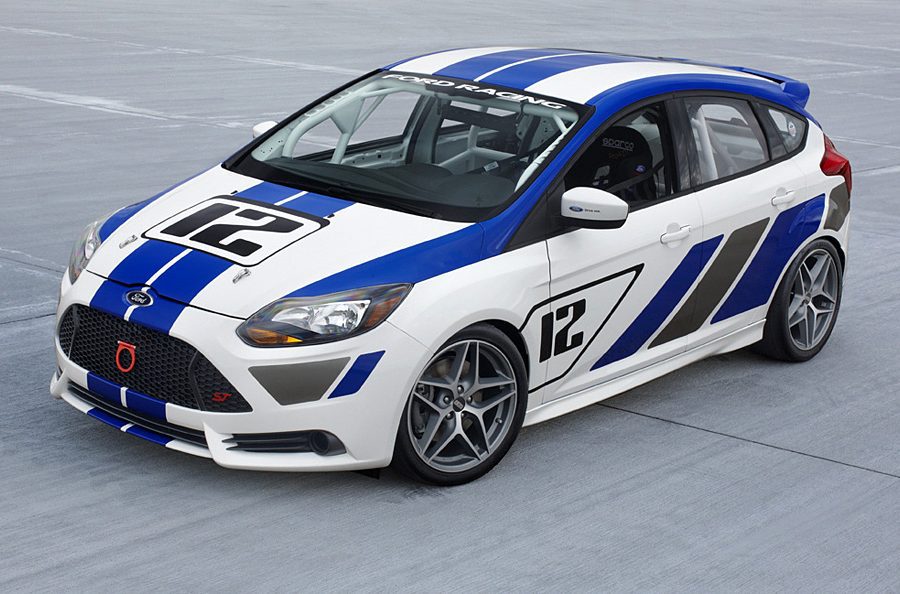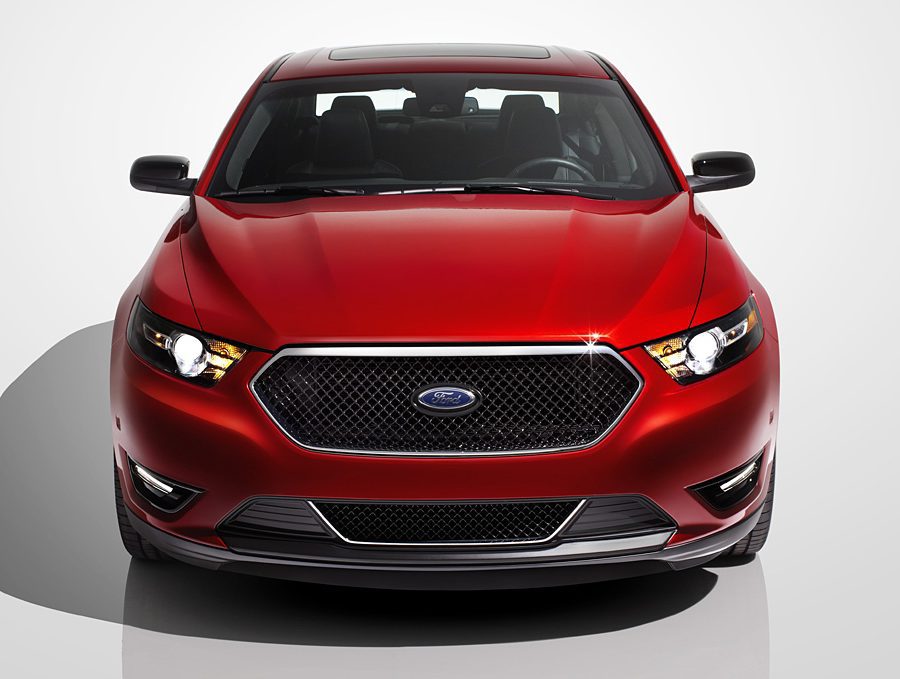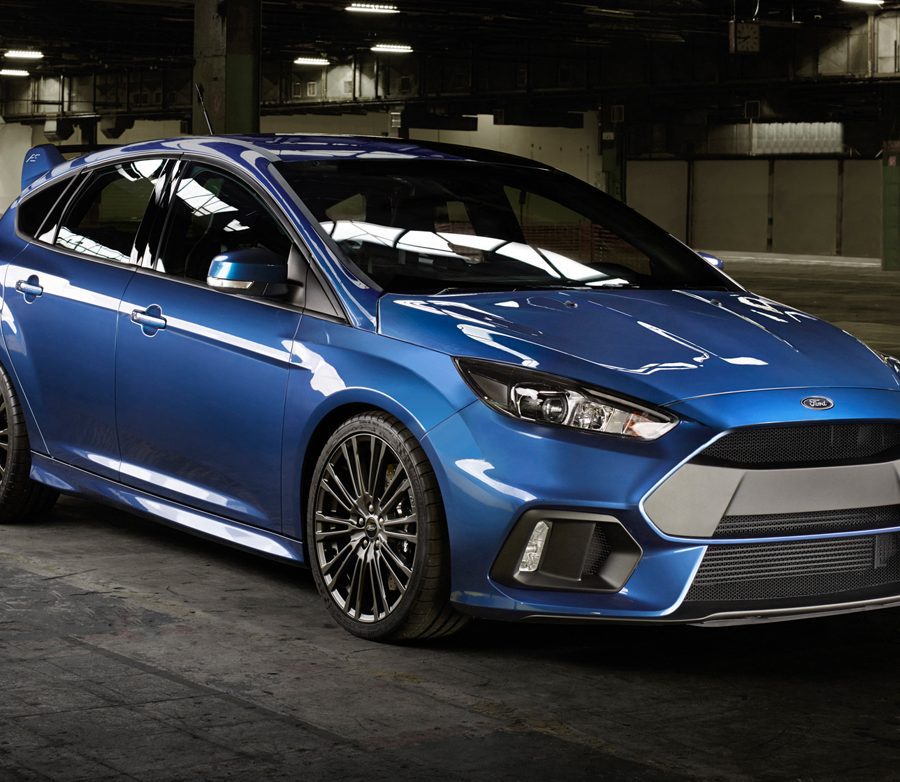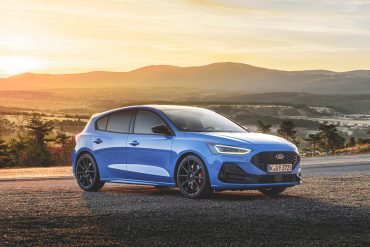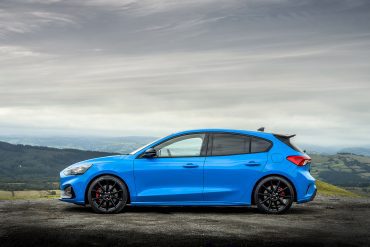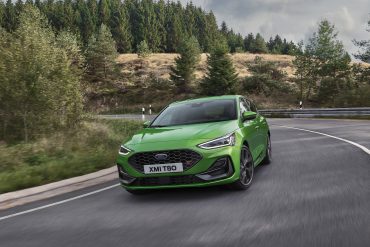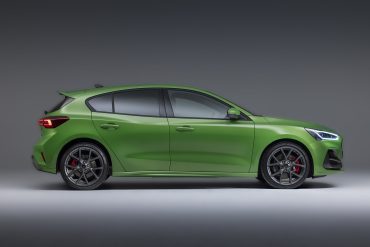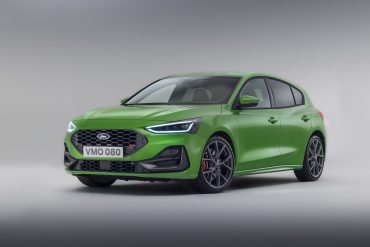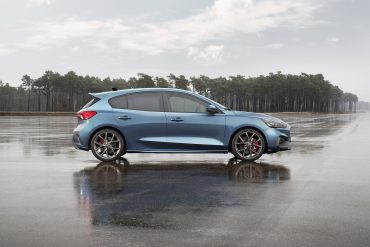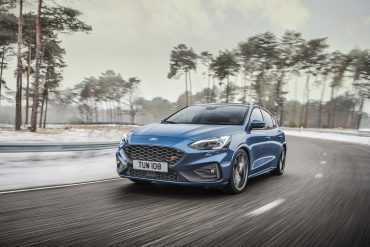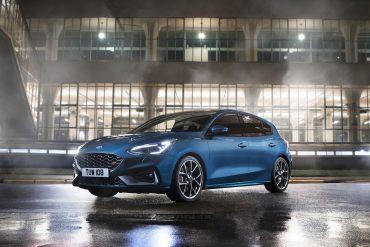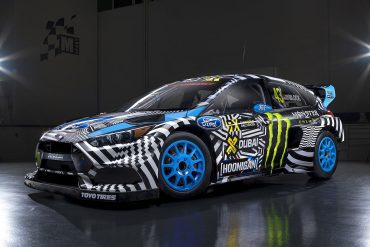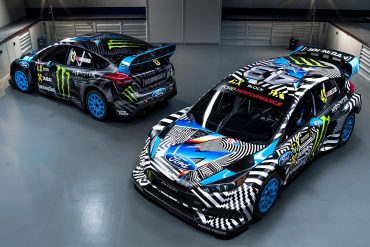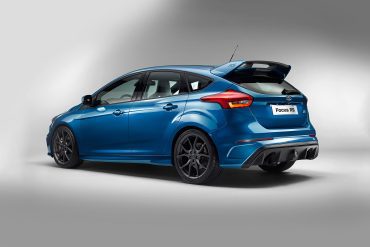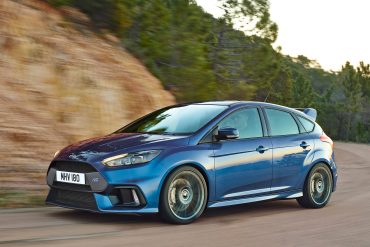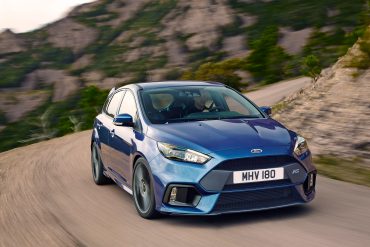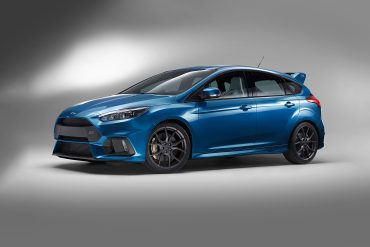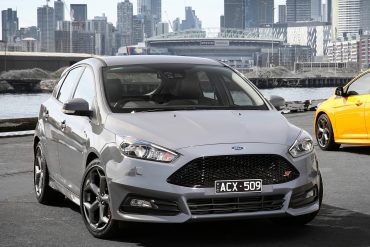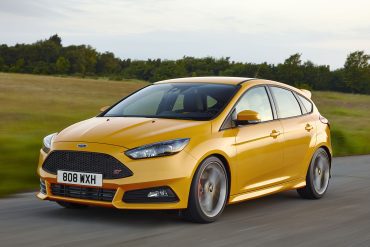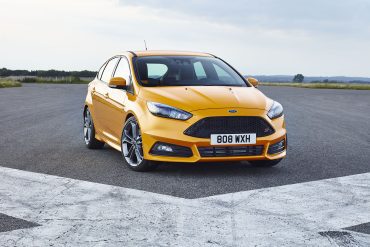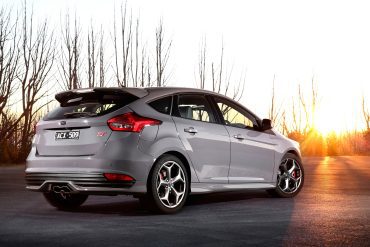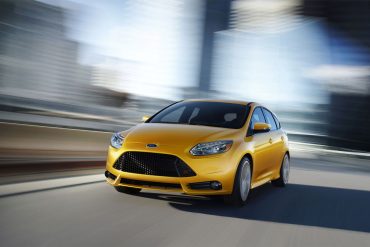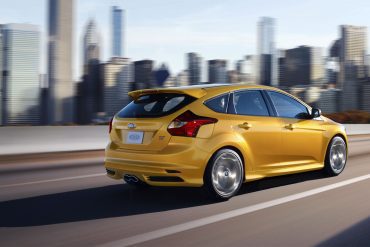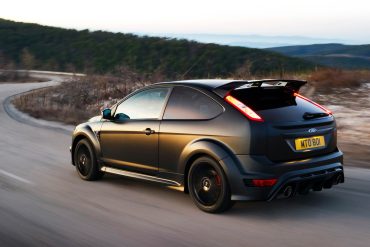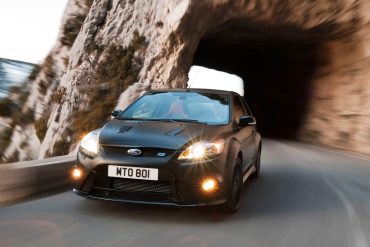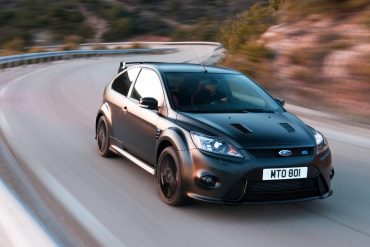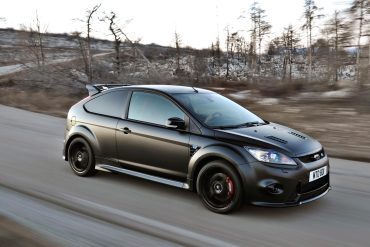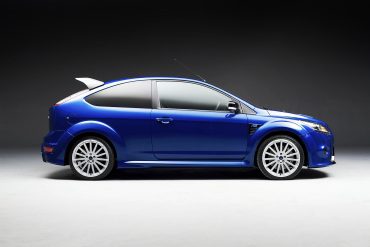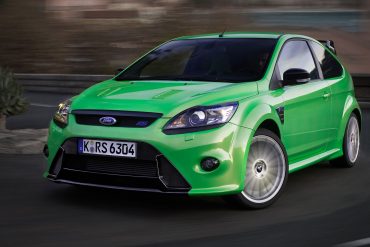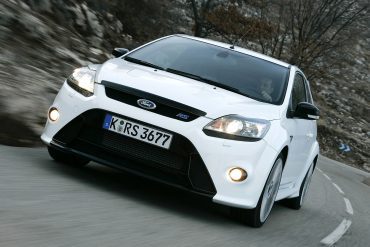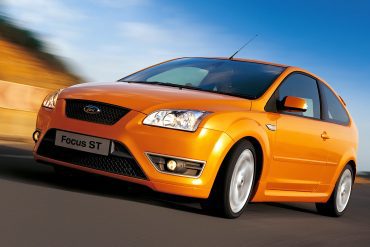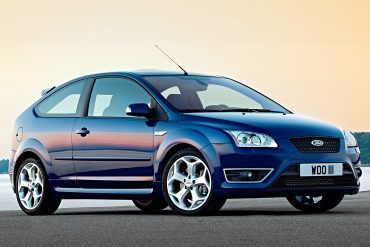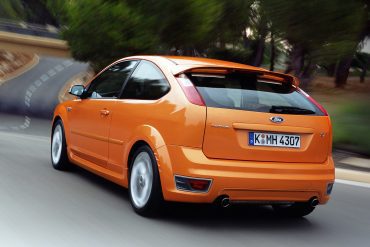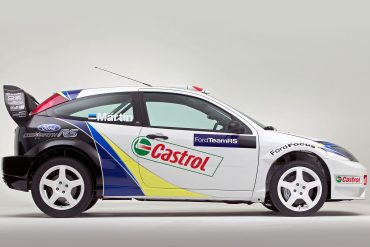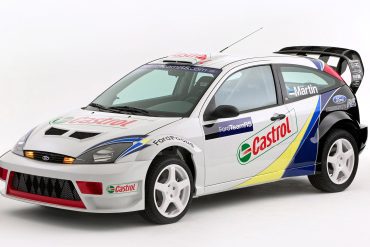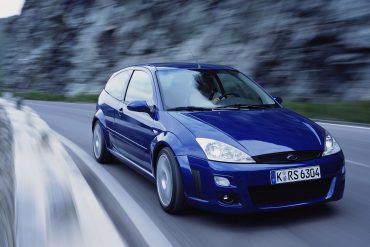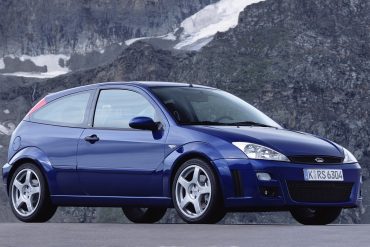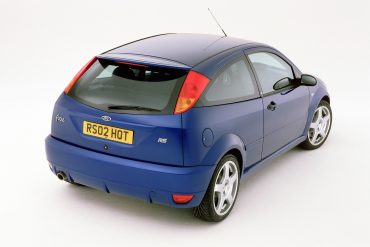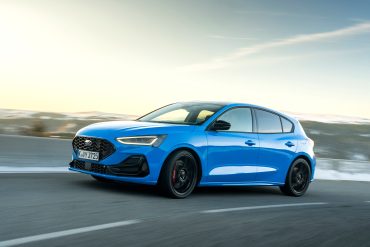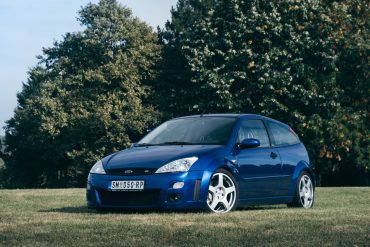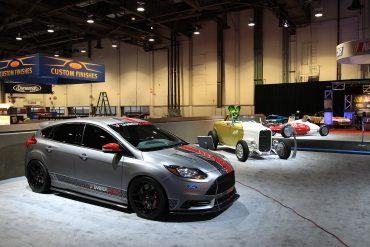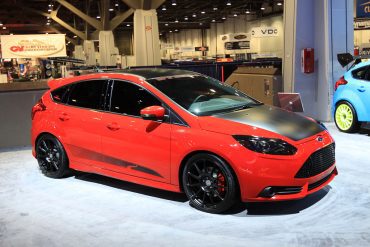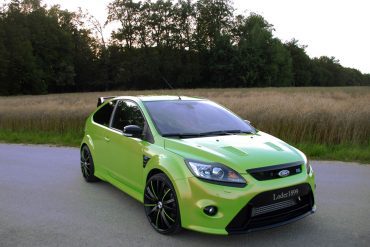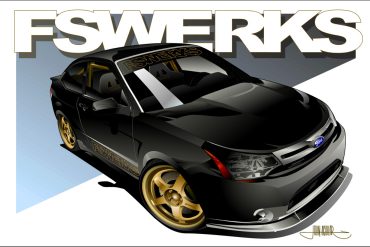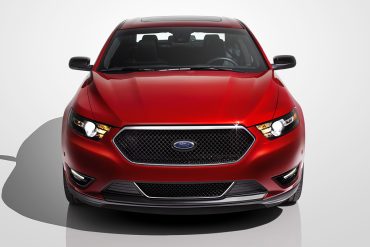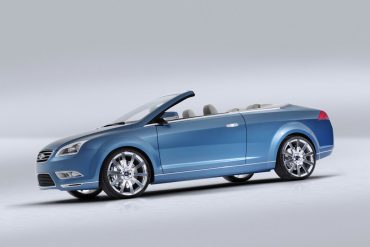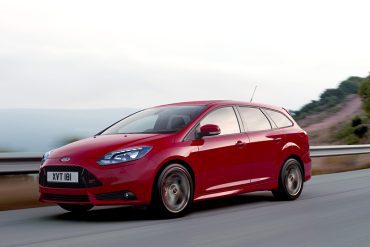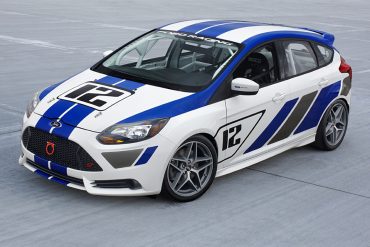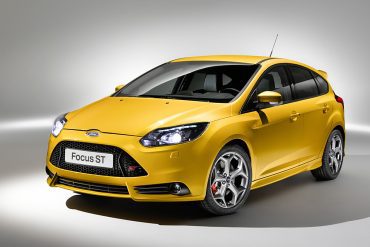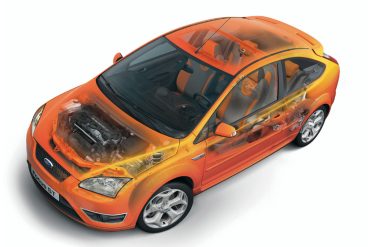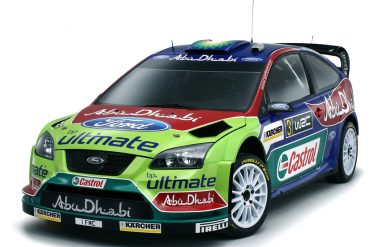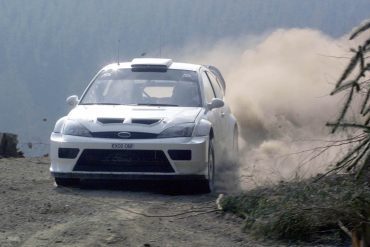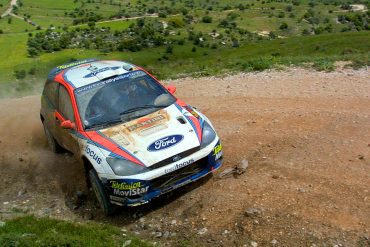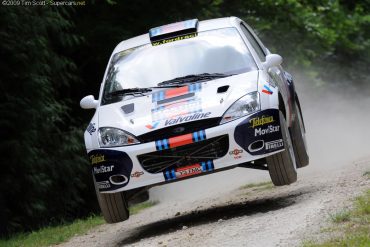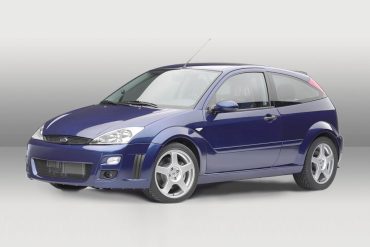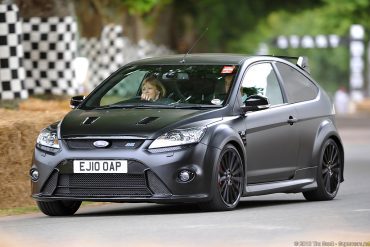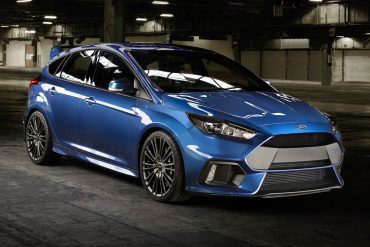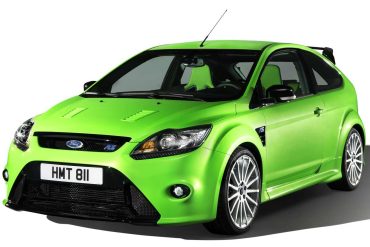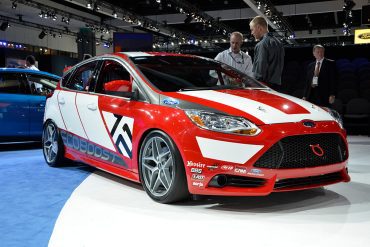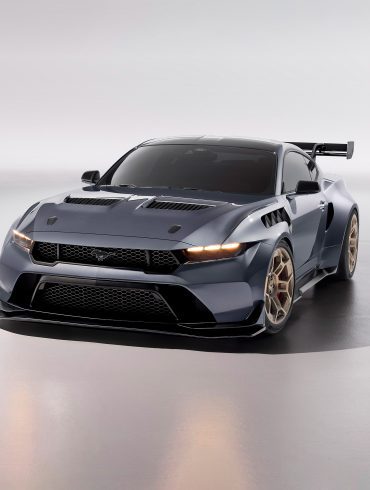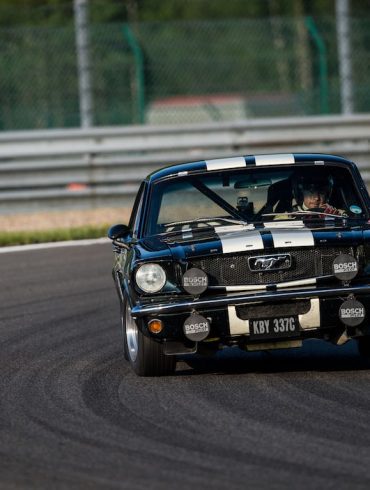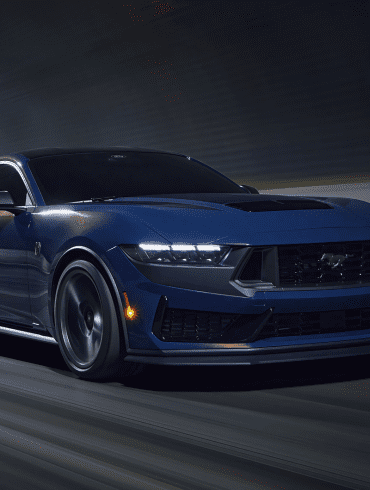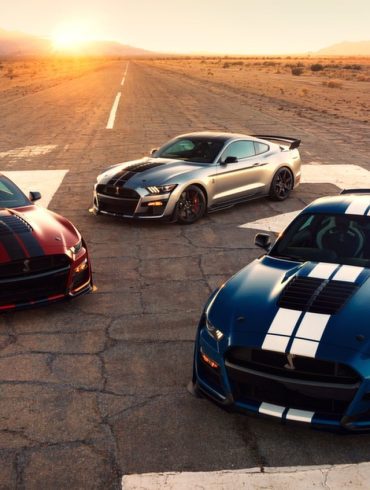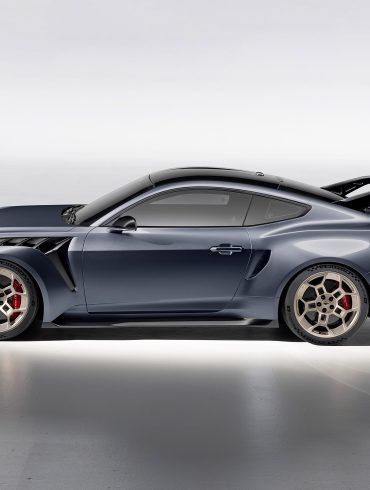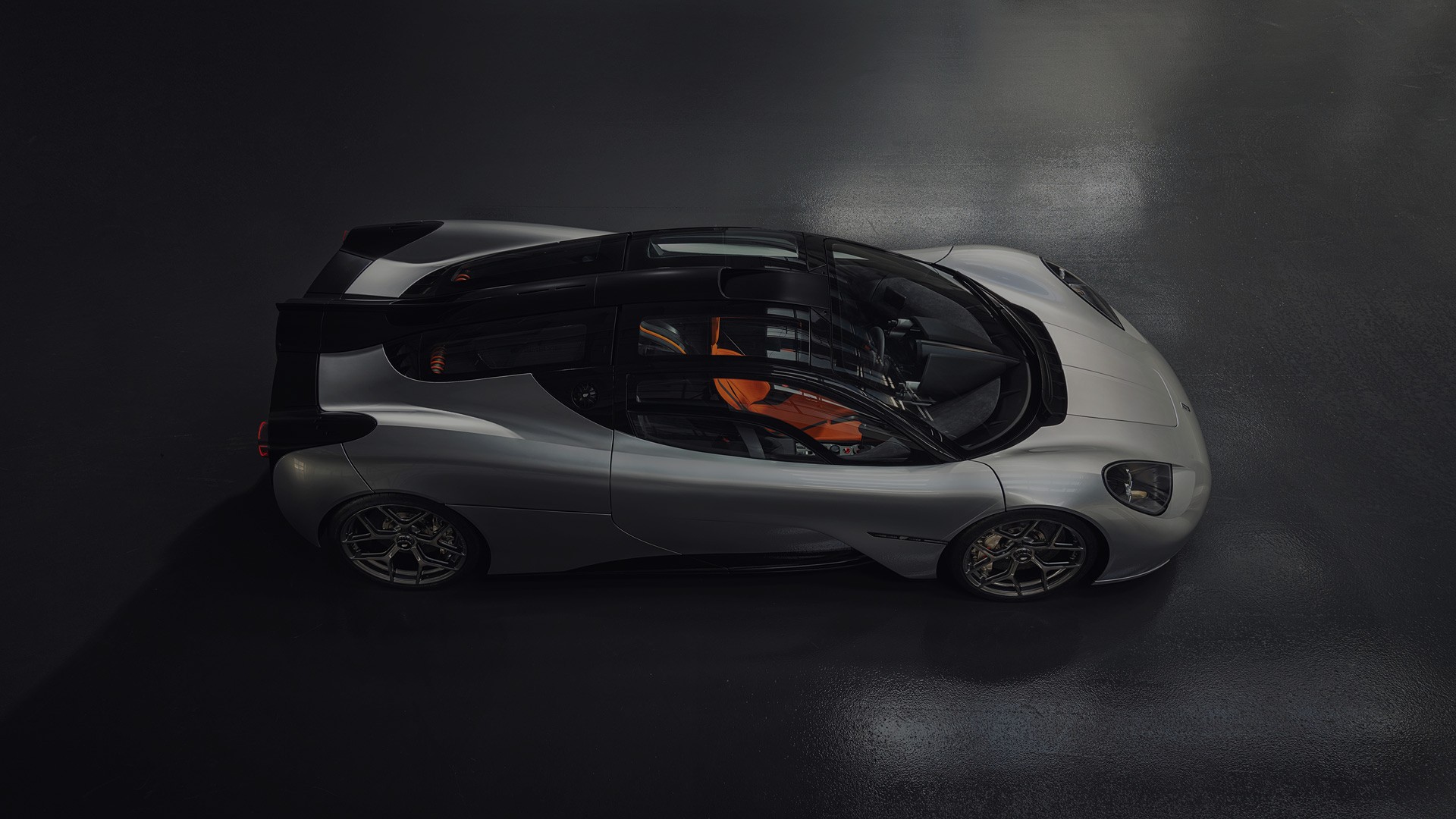Ford Focus
1998 - Present
The Ford Focus, a car that needs no introduction. This global icon has been a staple on roads around the world for decades, winning hearts with its blend of practicality, performance, and affordability. But what exactly makes the Ford Focus so special? In this ultimate guide, we'll delve deep into the history of the Focus, exploring its evolution through the generations, from the original game-changer to the latest models. We'll uncover the secrets behind its enduring popularity, examine the diverse range of body styles and trims, and take a closer look at some of the coolest and most sought-after variants.
Overview / Featured / The Generations / Models In-Depth / Motorsports / Image Gallery / More Updates
Ford Focus: A Compact Car with a Legacy of Innovation, Performance, and Versatility
Since its debut in 1998, the Ford Focus has become a benchmark in the compact car segment, combining practical everyday driving with spirited performance and cutting-edge technology. Originally designed to replace the Ford Escort, the Focus quickly set itself apart with its bold “New Edge” design, which introduced a fresh, dynamic look that appealed to a younger audience. Across four generations, the Focus has continued to evolve, embracing new technology, safety features, and powertrain innovations that have kept it at the forefront of its class.
The first-generation Focus was a revolution in design and engineering, featuring a distinctive, angular look and an advanced independent rear suspension system. It was a global success, earning awards for its sharp handling, safety, and style, and it laid the groundwork for the Focus as a driver-focused compact. Ford refined the Focus with a more mature design, improved interior quality, and enhanced comfort, while keeping its sporty nature intact. This generation introduced performance-oriented models like the Focus ST and RS, cementing its appeal to enthusiasts.
The third-generation Focus marked the beginning of Ford’s “One Ford” strategy, creating a single global model that could meet diverse market demands. It introduced SYNC infotainment, advanced safety features, and EcoBoost engines, further establishing the Focus as a technology-driven, efficient choice. The latest Focus is built on the C2 platform, offering a sleek design, premium interior, and state-of-the-art technology. Models like the rugged Focus Active and high-performance Focus ST provide options for different lifestyles, while Ford Co-Pilot360 offers an array of driver-assistance features, setting a new standard for safety and convenience.
The Focus has also made a lasting impact on motorsport, competing successfully in the World Rally Championship (WRC) and British Touring Car Championship (BTCC). In WRC, the Focus WRC became a formidable competitor with legendary drivers like Colin McRae and Marcus Grönholm, helping Ford secure multiple Manufacturer's Championships. In the BTCC, the Focus ST consistently took podium finishes, showcasing its versatility on the track.
Ford’s rally and touring car heritage influenced the creation of high-performance Focus models for the road. The Focus ST and Focus RS brought track-inspired power and handling to everyday driving, with features like turbocharged EcoBoost engines, sport-tuned suspensions, and in the case of the RS, an advanced all-wheel-drive system with Drift Mode. These models are beloved by enthusiasts for their blend of performance and practicality.
The Ford Focus has set a high standard in the compact car market, offering something for everyone—from families seeking comfort and safety to drivers craving performance and fun. Even as Ford has shifted its focus to SUVs and trucks in some markets, the Focus remains a symbol of the brand’s innovation and commitment to quality in the compact segment.
The Ford Focus
Manufacturer: Ford
Production: 1998–present
Class: Small family car/Compact car (C)
Body style: 3 or 5-door hatchback, 4-door sedan/saloon, 5-door estate, 2-door coupe (US), 2-door coupé-cabriolet (Europe)
Layout: Front-engine, front-wheel drive, Front-engine, four-wheel-drive (Mk 3 RS Only)
Predecessor: Ford Escort (Europe, North America and Argentina), Ford Laser (Asia and Oceania
"The Focus RS is a hooligan's dream. It's playful and engaging, with a drift mode that allows you to unleash your inner Ken Block." -
Jalopnik
Ford Focus Generations
From New Kid to Global Icon: A Journey Through Ford Focus Generations
The Ford Focus. A name synonymous with practicality, affordability, and driving enjoyment. Since its debut in 1998, this compact car has conquered roads worldwide, evolving through four distinct generations, each with its own personality and innovations. This section takes you on a comprehensive journey through the history of the Ford Focus, exploring the key features and highlights of each generation. We'll revisit the groundbreaking original that redefined the compact car segment with its New Edge design, sharp handling, and diverse range of body styles. The second generation matured with improved refinement, enhanced technology, and a continued focus on driving dynamics, while the third generation embraced a global platform, bringing a unified design language and advanced features to markets worldwide. The current iteration of the Focus, with its sleek styling, refined interior, and focus on technology and efficiency is a totally modern machine. Join us as we trace the evolution of this automotive icon, examining the design, technology, and performance advancements that have kept the Ford Focus at the forefront of the compact car segment for over two decades. From humble beginnings to global domination.
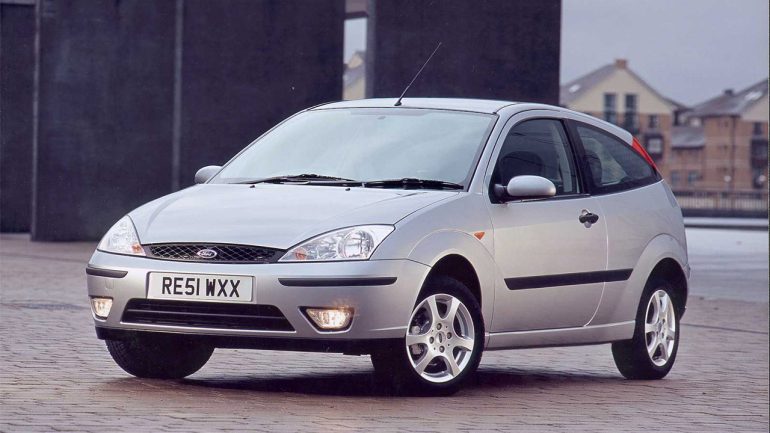
1st Gen Basics
Production: 1998–2007
Model years: 1998–2005 (Europe), 2000–2008 (Argentina), 2000–2007 (North America)
Designer: John Doughty & Claude Lobo
Body style: 3- and 5-door hatchback, 4-door saloon/sedan, 5-door estate/station wagon
Layout: Front-engine, front-wheel-drive
Mk1 Ford Focus (1998 - 2005)
First Generation Ford Focus
When Ford unveiled the first-generation Focus, designated the C170, in 1998, it marked a radical departure from the automaker’s previous compact car offerings. With bold styling, advanced engineering, and a refreshing approach to driving dynamics, the C170 platform redefined Ford’s position in the global compact car market. Let's take a closer look at what made the first-generation Ford Focus a game-changer.
In the late 1990s, the compact car segment was growing increasingly competitive, and Ford needed a model that could stand up to the likes of the Honda Civic, Volkswagen Golf, and other popular small cars. Ford sought to create a car that would appeal to a global audience, one that would be affordable and efficient yet stylish and technologically advanced. This led to the birth of the Focus under Ford's "New Edge" design philosophy, which emphasized bold lines and unique shapes. It was a deliberate break from the conservative styling of the Ford Escort, which the Focus would eventually replace.
The first-generation Ford Focus immediately grabbed attention with its distinctive “New Edge” design. Ford infused the car with sharp, angular lines, an aggressive stance, and dynamic curves, distinguishing it from the more traditional designs prevalent in the compact car market. Elements like the large headlights, triangular side windows, and unique taillight arrangement were fresh and bold. This wasn’t just for show—every design aspect was developed with aerodynamics and efficiency in mind. The forward-thinking styling appealed to a youthful, urban demographic, giving the Focus a unique identity in the segment.
The C170 platform introduced independent rear suspension, a rare feature in compact cars at the time, which significantly improved handling and ride comfort. The "Control Blade" independent rear suspension allowed each wheel to react independently, giving the Focus an agile and responsive feel on the road. The engineering focus on driving dynamics proved successful, as reviewers and drivers alike praised the Focus for its exceptional handling, especially for a front-wheel-drive compact car.
Under the hood, Ford offered a range of inline-four engines for different markets, including the 1.4L, 1.6L, 1.8L, and 2.0L Zetec and Duratec engines. These engines were designed to provide a balance between performance and fuel economy, with the 2.0L variant, in particular, gaining a reputation for reliability and spirited driving.
The first-generation Focus was one of the first cars developed under Ford’s “One Ford” strategy, meaning it was designed to be a global car, sold in various markets worldwide with minimal changes. This approach allowed Ford to streamline manufacturing processes, reduce costs, and maintain consistency in quality and design. The Focus was produced in multiple locations, including Europe, North America, and South America, with slight modifications to meet regional safety and emission standards.
In the United States, the Focus was available in various body styles, including a four-door sedan, a five-door hatchback, and a station wagon, while Europe also received a three-door hatchback variant. This versatility in body styles appealed to a broad audience, from families to young professionals.
One of the standout models in the U.S. lineup was the Focus ZX3, a three-door hatchback variant that combined sportiness and practicality. The ZX3 was aimed at younger, more adventurous drivers looking for an affordable yet exciting car. With its short overhangs, athletic stance, and available 2.0L Zetec engine, the ZX3 quickly became popular among enthusiasts. This model laid the groundwork for future sporty Focus models, including the performance-oriented SVT Focus, which debuted in 2002.
The first-generation Ford Focus received acclaim from both the press and the public. It won numerous awards, including the prestigious “European Car of the Year” in 1999 and the North American “Car of the Year” in 2000. Critics praised its handling, design, and overall value, while drivers enjoyed the car’s fun-to-drive nature and affordable price point.
The Focus's success also had a lasting impact on Ford’s design and engineering philosophy. It demonstrated that affordable, small cars didn’t have to sacrifice style, handling, or safety. This legacy carried through to future generations of the Focus, which continued to build on the reputation established by the first generation.
The first-generation Ford Focus was more than just a replacement for the Escort; it was a radical shift in Ford’s approach to compact cars. By blending innovative design, advanced engineering, and versatile practicality, Ford created a car that appealed to a global audience and stood out in a crowded market. Its success demonstrated the potential of Ford's "One Ford" strategy and set a new benchmark for compact cars.
Mk2 Ford Focus (2005 to 2011)
Second Generation Ford Focus
When Ford introduced the second-generation Focus in 2004, the goal was to build on the success of its groundbreaking predecessor, the C170. Designated the C307, this new model represented a substantial refinement of the original Focus formula. With enhanced safety, improved interior quality, and even sportier dynamics, the second-generation Focus catered to a more mature market without compromising the sporty, fun-to-drive nature that had made the first generation so popular. Let’s delve into the features, innovations, and legacy of this pivotal model in Ford’s lineup.
The first-generation Focus was known for its bold and angular “New Edge” design, but by 2004, Ford opted to soften its edges for a more streamlined look. The C307 platform adopted a design language often referred to as "Dynamic Flow," which emphasized a sleeker, more mature aesthetic. The sharp angles were replaced by smoother lines and a wider, more aerodynamic stance that projected sophistication.
The updated look included redesigned headlights, a prominent front grille, and a more refined rear end. Though the second-generation Focus maintained the hatchback and sedan body styles, the changes to its styling were enough to give it a fresh look while keeping it recognizable to fans of the original model.
While the original Focus set a high standard for handling, Ford made key upgrades to the platform to provide even better driving dynamics. The C307 continued to feature Ford's “Control Blade” independent rear suspension, a key component of the Focus’s renowned handling. This suspension system allowed the car to maintain excellent grip and composure on corners, ensuring a responsive and agile feel.
Ford also improved ride comfort by making the structure stiffer, reducing road noise, and enhancing stability at higher speeds. This made the second-generation Focus a better option for longer commutes and highway driving, expanding its appeal to families and professionals looking for comfort alongside performance.
One of the main criticisms of the first-generation Focus was its interior quality, which Ford addressed in the second-generation model. The new interior featured higher-quality materials, a more intuitive layout, and a greater emphasis on ergonomics. Soft-touch plastics replaced the harder materials found in the first Focus, and Ford redesigned the dashboard with a focus on simplicity and ease of use.
Seating was also improved, with more supportive front seats and additional legroom for rear passengers, making the Focus a more comfortable option for families. The dashboard received a new layout, incorporating more user-friendly controls and displays. Ford also introduced additional comfort and convenience options, including a new infotainment system, climate control, and optional leather upholstery for the higher trim levels.
The second-generation Focus continued to offer a range of engine choices tailored to various markets, with improvements to efficiency and performance. European markets received a variety of engines, including:
1.4L, 1.6L, and 1.8L inline-four engines, ideal for drivers focused on fuel economy.
A 2.0L inline-four engine, providing a balanced blend of performance and efficiency.
TDCi diesel engines, such as the 1.6L and 2.0L variants, catering to European customers seeking better fuel economy.
For the North American market, Ford kept the engine selection straightforward, with a 2.0L Duratec engine as the standard option and a 2.3L Duratec available for certain models. These engines offered improved fuel efficiency compared to the previous generation, aligning with Ford’s focus on providing more economical choices to American buyers.
Building on the success of performance-focused versions of the first-generation Focus, Ford introduced the high-performance ST and RS models for the second generation. The Focus ST, which debuted in 2005, featured a turbocharged 2.5L inline-five engine from Volvo, delivering a thrilling 225 horsepower. The ST combined sporty handling, aggressive styling, and a unique interior trim to create a car that appealed to enthusiasts while remaining practical.
For true performance aficionados, Ford launched the Focus RS in 2009. This model featured an even more powerful 2.5L turbocharged engine, tuned to produce 305 horsepower. The RS also included specialized features such as a limited-slip differential, larger brakes, and a more aggressive body kit, cementing its place as one of the most exciting hot hatches of its time.
The second-generation Focus was met with a generally positive reception from critics and buyers alike. It continued to be praised for its exceptional handling, high safety standards, and versatility. The upgrades in interior quality and the added focus on comfort made the second-generation model more appealing to a broader audience, while the ST and RS models kept enthusiasts engaged.
The success of the C307 cemented the Focus's position in Ford’s global lineup and reaffirmed the brand’s dedication to the compact car segment. It became a go-to choice for buyers looking for a blend of economy, comfort, and fun, helping Ford capture significant market share worldwide.
The second-generation Ford Focus built upon the foundation of its predecessor by refining what made the original so popular and addressing areas for improvement. With a more mature design, improved interior quality, expanded safety features, and advanced technology, the C307 appealed to a wider audience while preserving the dynamic handling that had made the Focus a hit.
The Focus ST and RS variants also added a level of excitement to the lineup, proving that practicality and performance could coexist in a compact car. The second-generation Focus not only solidified Ford’s reputation for building engaging compact cars but also set the stage for future innovations in the Focus lineup, ensuring its place as a mainstay in the global automotive market.
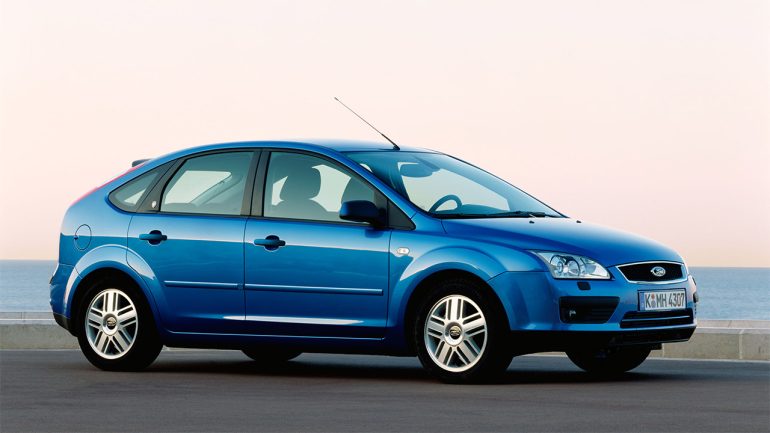
2nd Gen Basics
Production: 1998–2007
Model years: 1998–2005 (Europe), 2000–2008 (Argentina), 2000–2007 (North America)
Designer: John Doughty & Claude Lobo
Body style: 3- and 5-door hatchback, 4-door saloon/sedan, 5-door estate/station wagon
Layout: Front-engine, front-wheel-drive
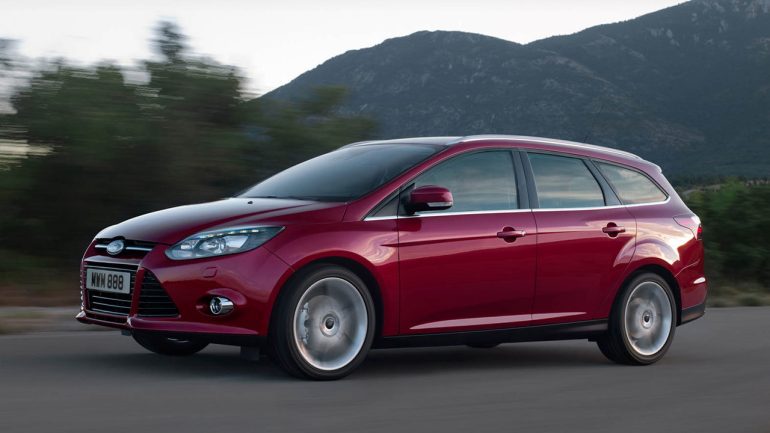
3rd Gen Basics
Production: Dec 2010 – 2019
Model years: 2010–2018 (Europe), 2012–2019 (North/South America)
Designer: Martin Smith, Stefan Lamm, Murat Güler
Body style: 5-door hatchback, 4-door sedan, 5-door station wagon
Layout: Front-engine, front-wheel-drive or four-wheel-drive (Focus RS only)
Mk3 Ford Focus (2011 to 2018)
Third Generation Ford Focus
Launched in 2010, the third-generation Ford Focus, designated as the C346, was a significant step in Ford's journey toward producing a truly global car. With its “One Ford” strategy, Ford aimed to consolidate its model lineup and produce a single version of the Focus that could meet the needs of customers worldwide. The C346 generation featured a new, sophisticated design, advanced technology, improved efficiency, and an even sportier drive, making it one of the most competitive offerings in the compact car segment. Here’s an in-depth look at the third-generation Ford Focus and how it marked a turning point for Ford.
Unlike the previous generations, where different versions were tailored to the American and European markets, the third-generation Focus was developed as a truly global car. This “One Ford” strategy aimed to streamline production, reduce costs, and create a consistent experience for drivers worldwide. Produced in various locations around the world, including the U.S., Germany, and China, this unified Focus allowed Ford to offer a single platform that met the needs of various markets without significant alterations.
This global approach was ambitious, yet it proved to be a strong selling point. The C346 platform allowed Ford to bring uniform features, performance, and quality to customers in Europe, North America, Asia, and beyond, making it an accessible yet highly advanced option for a diverse audience.
The third-generation Focus introduced a modern and dynamic design that moved away from the understated look of the second generation. With a more aerodynamic shape, lower stance, and the introduction of Ford’s now-iconic trapezoidal grille, the Focus C346 looked both sporty and upscale. Sweeping headlights, a more aggressive front bumper, and subtle curves along the sides gave the car a more sculpted appearance.
The five-door hatchback and four-door sedan styles catered to different preferences, with both options maintaining the Focus’s streamlined, aerodynamic profile. The design updates were not only visually appealing but also served a functional purpose, reducing drag and improving fuel efficiency.
The third-generation Focus came with a range of powertrain options that offered a good balance between performance and fuel efficiency. The 1.6L and 2.0L inline-four engines were the standard choices, with the 2.0L version featuring direct fuel injection for improved power and efficiency. In the United States, Ford also introduced a 1.0L EcoBoost three-cylinder engine, which provided excellent fuel economy without compromising too much on performance, appealing to drivers who prioritized efficiency.
In Europe, the Focus also offered diesel options, including the popular 1.6L and 2.0L Duratorq engines, which provided exceptional fuel economy and torque, making the Focus a highly attractive option for long-distance drivers. Transmission options included a five-speed manual, a six-speed manual, and Ford’s six-speed PowerShift automatic, a dual-clutch transmission that offered smoother shifts and better fuel economy compared to traditional automatics.
One of the most significant developments in the third-generation Focus was the introduction of Ford’s EcoBoost engine technology. The 1.0L EcoBoost engine, introduced in 2012, featured turbocharging and direct injection, allowing it to deliver the power of a larger engine while maintaining the fuel efficiency of a small one. This engine was particularly well-received in Europe, where high fuel prices and strict emissions standards made fuel-efficient cars more desirable. The EcoBoost engine won multiple awards and helped establish Ford as a leader in turbocharged, fuel-efficient technology.
While the third-generation Focus was designed to appeal to a global market, Ford didn’t compromise on driving dynamics. The C346 platform retained the Control Blade independent rear suspension, which contributed to the Focus’s excellent handling and stability. This setup made the Focus feel agile, responsive, and confident, qualities that were praised by enthusiasts and casual drivers alike.
To improve overall comfort, Ford focused on reducing noise, vibration, and harshness (NVH) in the third-generation Focus. The use of high-strength steel in the body structure made the car more rigid, reducing road noise and enhancing ride comfort. The result was a car that was not only fun to drive but also comfortable for longer journeys.
In 2012, Ford introduced the Focus Electric, an all-electric version of the Focus, marking Ford’s first major entry into the electric vehicle market. The Focus Electric featured a 23 kWh lithium-ion battery pack, giving it a range of about 76 miles on a single charge. The electric Focus was praised for its quiet ride, seamless acceleration, and practical hatchback design, which made it a viable option for urban dwellers and environmentally-conscious drivers.
Continuing its tradition of performance-oriented models, Ford introduced the Focus ST and Focus RS during the third generation, much to the excitement of enthusiasts.
The Focus ST, introduced in 2012, featured a turbocharged 2.0L EcoBoost engine producing 252 horsepower, paired with a six-speed manual transmission. It came with sporty styling cues, a sport-tuned suspension, and Recaro seats, making it a thrilling yet practical hot hatch.
In 2015, Ford launched the Focus RS, which was an even more powerful performance model equipped with a 2.3L EcoBoost engine delivering 350 horsepower and all-wheel drive. The Focus RS was engineered to be a serious competitor to other high-performance hatchbacks, featuring a Drift Mode that allowed drivers to explore the limits of handling and control. The RS quickly gained a cult following and solidified the Focus’s reputation as one of the most exciting performance compacts on the market.
The third-generation Focus marked a high point in Ford’s compact car lineup, combining global appeal, innovative technology, and a focus on efficiency and performance. It was well-received by drivers around the world and helped Ford strengthen its reputation for building world-class compact cars.
Mk4 Ford Focus (2018 - Present)
Fourth Generation Ford Focus
The fourth-generation Ford Focus, known as the C519, debuted in 2018 with a modern design, advanced technology, and an emphasis on efficiency and comfort. As Ford’s flagship compact car, the new Focus took a more refined, upscale approach, with premium features and connectivity that positioned it as one of the most advanced cars in its segment. The C519 generation aimed to provide a well-rounded experience, combining driving enjoyment, safety, and modern conveniences for a global audience. Here’s a closer look at how the fourth-generation Ford Focus continued to push boundaries in the compact car market.
With the C519 generation, Ford gave the Focus a complete redesign that emphasized a sleek, modern look. The new Focus had a more streamlined shape, longer wheelbase, and lower, wider stance. Up front, the car featured a more prominent hexagonal grille flanked by narrower, sharper headlights, giving it an athletic yet elegant appearance. The rear design was more cohesive than previous generations, with horizontal taillights adding to the wider stance and a sportier, more premium feel.
Ford’s designers paid particular attention to aerodynamics, with design elements that improved airflow and fuel efficiency. The C519 Focus was available in multiple body styles, including a five-door hatchback, four-door sedan, and an estate (station wagon) in some markets, catering to a variety of preferences and lifestyles.
The fourth-generation Focus was built on Ford’s new C2 platform, which provided greater rigidity, improved safety, and more efficient use of space. The C2 platform was lighter and stronger than its predecessor, contributing to better fuel efficiency and handling. Ford designed the platform to improve crash protection and enhance passenger comfort, making the new Focus safer and more refined for everyday driving.
The new architecture also allowed for an expanded wheelbase, providing more interior space for passengers, particularly in the rear. The C2 platform enabled Ford to fit the Focus with advanced driver-assistance systems and electrification options, future-proofing the model for the evolving automotive landscape.
The C519 generation was equipped with a range of powertrain options tailored to meet the needs of different global markets. Ford offered a variety of engines, including EcoBoost gasoline engines and EcoBlue diesel engines, with a focus on improving fuel economy and reducing emissions. Key engine options included:
1.0L EcoBoost: This three-cylinder engine featured cylinder deactivation technology, allowing it to switch between three and two cylinders depending on demand, providing an optimal balance of power and efficiency.
1.5L EcoBoost: Available with either three or four cylinders, this engine delivered more power for those seeking a sportier drive without sacrificing fuel economy.
EcoBlue Diesel: Available in 1.5L and 2.0L options, the EcoBlue diesel engines were popular in European markets for their excellent fuel efficiency and torque.
Transmission options included a six-speed manual and an eight-speed automatic, which provided smooth shifting and improved fuel economy. These choices allowed the Focus to appeal to both efficiency-minded drivers and those seeking a more engaging driving experience.
In addition to the standard models, Ford introduced several variants that expanded the Focus lineup:
Focus ST: Ford continued its tradition of offering a high-performance variant with the Focus ST, equipped with a 2.3L EcoBoost engine that produced 276 horsepower. The ST featured a sport-tuned suspension, upgraded brakes, and performance-oriented styling, making it a favorite among enthusiasts.
Focus Active: Designed to cater to the growing popularity of crossovers, the Focus Active featured rugged styling cues, increased ground clearance, and a raised suspension, offering light off-road capability. The Active model appealed to buyers looking for a compact car with a more adventurous personality.
These variants diversified the Focus lineup, catering to a wide range of drivers, from those seeking performance to those who preferred a more rugged, versatile compact car.
Ford recognized the growing demand for eco-friendly vehicles and responded by incorporating mild-hybrid technology into some Focus models. The mild-hybrid variant used a 48-volt battery and an integrated starter-generator to assist the engine, improving fuel economy and reducing emissions. This mild-hybrid option made the Focus an attractive choice for environmentally conscious drivers without requiring a full electric setup.
The fourth-generation Focus was well-received globally, praised for its improved quality, safety features, and driving dynamics. It remained a popular choice in Europe, Asia, and other regions, even as Ford’s North American lineup shifted toward SUVs and trucks. The success of the C519 generation highlighted Ford’s ability to adapt to market trends, balancing performance, safety, and efficiency in a highly competitive segment.
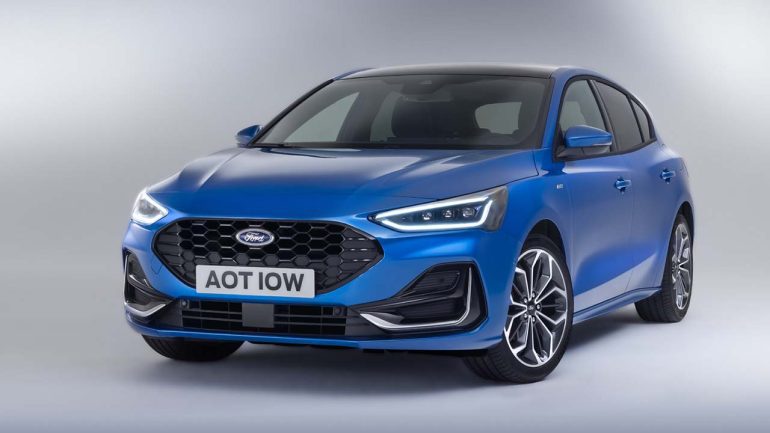
4th Gen Basics
Production: 2018 - Present
Designer: Jordan Demkiw
Body style: 5-door hatchback, 5-door estate, 4-door saloon
Layout: Front-engine, front-wheel-drive
The Ford Focus & Motorsport
From Rally Stages to Touring Car Championships
Ford Focus in Rallying: World Rally Championship (WRC)
The Ford Focus made its motorsport debut in the World Rally Championship in 1999, replacing the Ford Escort, which had been a staple of rallying for decades. The Focus was an ambitious new entry, designed with advanced engineering and powered by a turbocharged 2.0L engine. With Ford’s longstanding partnership with M-Sport, a British motorsport team specializing in rally, the Focus quickly became a rallying force.
The Focus’s rallying career kicked off in 1999 under the Ford World Rally Team banner, with Colin McRae and Simon Jean-Joseph as the initial drivers. McRae, already a world champion, gave the Focus WRC a flying start, taking it to a second-place finish at its debut event in Monte Carlo. Throughout its early years, the Focus continued to evolve, with improvements to aerodynamics, handling, and power output making it increasingly competitive against formidable rivals like Subaru and Mitsubishi.
McRae and his teammate Carlos Sainz continued to push the Focus to its limits, achieving numerous podiums. Although the Focus was unable to secure a championship title in these early years, it did solidify Ford’s position as a competitive force in WRC, thanks in large part to its innovative design and powerful Cosworth-developed engines.
The Ford Focus WRC entered its golden years from 2006 to 2010 with the introduction of the second-generation Focus, which incorporated the C307 platform and a revised 2.0L Duratec engine. Finnish driver Marcus Grönholm and co-driver Timo Rautiainen joined the team, bringing a wealth of experience. Their debut season in 2006 was a landmark for Ford, as Grönholm clinched five wins, and the Focus WRC ultimately secured Ford the Manufacturers’ Championship – their first in 27 years.
Under Grönholm and Mikko Hirvonen’s driving, the Focus WRC achieved a total of 8 wins in the 2006 season, giving Ford the Manufacturers’ title once again in 2007. This remarkable period established the Focus as a top-tier rally car, known for its agility, durability, and balance on gravel, tarmac, and snow. The Focus’s success continued in the hands of Hirvonen, who consistently secured podiums for Ford until 2010, when the Focus WRC was replaced by the Fiesta WRC.
The Ford Focus WRC’s tenure in the World Rally Championship was highly successful, with numerous podiums and stage wins across various terrains worldwide. It remained one of the most competitive cars on the circuit and built a dedicated fanbase. The Focus’s successes on the world stage further cemented Ford’s commitment to rallying, which continued with the Ford Fiesta. Its success in WRC also inspired road-going performance models like the Focus RS and ST, which brought some of the rally-inspired engineering to everyday drivers.
Ford Focus in Touring Cars: British Touring Car Championship (BTCC) and Beyond
Beyond rallying, the Ford Focus also became a strong contender in touring car racing, particularly in the British Touring Car Championship (BTCC). Touring car racing, with its intense, close-quarters competition, brought a new dimension to the Focus’s motorsport journey, showcasing its versatility and durability on the circuit.
The Ford Focus first appeared in the BTCC in 2003, prepared by the Ford Team Mondeo, marking Ford's return to touring car racing after a hiatus. Initially, the Focus struggled to match the performance of more established competitors like Vauxhall and Honda, but it laid the groundwork for future success. Over the years, Ford teams worked to refine the Focus’s touring car setup, allowing it to become increasingly competitive.
The Ford Focus’s BTCC career gained momentum in the 2010s, particularly with the introduction of the NGTC (Next Generation Touring Car) regulations in 2011. These new rules allowed for more parity between different car manufacturers, leveling the playing field and giving Ford’s teams the opportunity to make the Focus a top competitor.
Notably, the Motorbase Performance team, running the Focus ST, became one of the key players in the BTCC. With drivers like Mat Jackson, Andrew Jordan, and Rory Butcher, the Focus consistently appeared on the podium and became a fan favorite. In 2016, the Focus achieved a standout season, with Motorbase Performance securing several wins and consistently challenging for the championship. In the hands of top drivers, the Focus proved itself as a reliable, durable, and competitive car in the BTCC.
The Focus was also competitive in other touring car series, including the Scandinavian Touring Car Championship (STCC), where it achieved multiple wins and podium finishes, proving its adaptability across various racing series and track types.
Touring car racing emphasized the Focus’s adaptability and durability. The car’s strong chassis and reliable EcoBoost engines provided a solid foundation for the grueling demands of circuit racing. Throughout its BTCC career, the Focus featured modifications like improved aerodynamics, stiffer suspensions, and advanced braking systems that allowed it to handle high-speed corners and the frequent contact that’s part of the touring car racing experience. The BTCC Focus also showcased Ford’s engineering versatility, with performance developments that translated well to production models, especially with the Focus ST and RS.
The Focus’s success in motorsport had a lasting impact on the road-going Focus models, particularly with the ST and RS performance versions. Ford’s experience with the Focus in rally and touring car racing directly influenced the engineering and design of these high-performance models.
The Focus ST, a staple of Ford’s lineup since the early 2000s, brought elements of racing heritage to the road. The Focus ST featured turbocharged engines, sport-tuned suspensions, and advanced aerodynamics inspired by the track. These attributes made the Focus ST a thrilling drive for those who wanted a sporty experience without compromising practicality.
The Focus RS, first introduced in 2002, was Ford’s rally-inspired street machine, taking performance to the next level. The final generation of the Focus RS, introduced in 2016, featured a 2.3L EcoBoost engine with 350 horsepower and an advanced all-wheel-drive system that included a Drift Mode, a nod to Ford’s rallying prowess. This high-performance model was a direct beneficiary of Ford’s success in WRC, delivering rally-like performance for everyday driving.
A Legacy of Racing Success and Innovation
The Ford Focus’s impact on motorsport has been far-reaching, from dominating the rally stages of the WRC to competing fiercely in the BTCC. In rallying, the Focus proved itself as a rugged, adaptable machine, capable of conquering challenging terrains worldwide, with its success largely attributed to Ford’s collaboration with M-Sport. In touring car racing, the Focus held its own in the BTCC, where it became a regular on the podium thanks to teams like Motorbase Performance.
Ford’s commitment to pushing the Focus to its limits in motorsport ultimately benefitted its road-going versions, with the Focus ST and RS showcasing the lessons learned on rally stages and racetracks. The Focus’s achievements in motorsport, paired with its adaptability and performance, have solidified its place as an iconic model for Ford, appealing to both everyday drivers and racing enthusiasts. The Focus’s legacy in motorsport stands as a testament to Ford’s dedication to performance, innovation, and competition at the highest levels of racing.
"The Focus ST is a performance bargain. It's fast, fun, and affordable, making it a great choice for enthusiasts on a budget."
Top Gear


